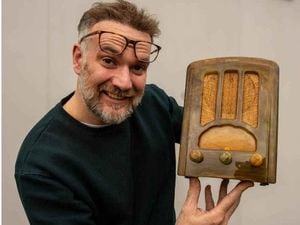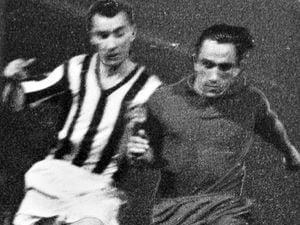Why tank crews gave thanks to Black Country in epic battle
Seventy years ago the Glorious Glosters wrote their names in history in one of the epic battles of the Korean War.

But Cannock military historian Richard Pursehouse has highlighted the key role during the fighting of April 1951 of one of Britain's finest ever fighting machines.
The Centurion tank, whose crews owed their lives in part to the skills of workers in the Black Country – the tank turrets, weighing nearly eight tonnes each, were cast in one piece by F H Lloyd at Wednesbury.
Today Richard said more needs to be done to highlight the link between our region and the machine.
He said: "The supporting role of the Centurion Mark III tanks of the 8th King’s Royal Irish Hussars at the Battle of the Imjin River in Korea in late April 1951 has gone down in military history as a crucial factor in the outcome.
"The Centurion was regarded as one of the best medium battle tanks in the world. With a powerful 20-pounder main gun, a reliable engine, and thick armour, the tank was more than a match for the tanks of the Warsaw Pact and the Chinese Liberation Army.
"Having read of the Centurions' exploits at Imjin River in 1951, I hope the story about their support during the battle will be of interest to Star readers who may have little knowledge about the Korean War."
During the fighting the tanks faced human waves of Chinese infantry, some of whom climbed on the turrets trying to open the hatches to drop in grenades. Crews inflicted grievous losses on the attacking troops with their guns or, gruesomely, running them over and crushing them.

The Centurion had been developed during the Second World War in an attempt to produce a British tank which could face the German tanks of the day on something like equal terms, as contemporary Allied tanks were fatally under-armoured and outgunned.
While the Centurion arrived too late to see wartime service, it proved a very successful post-war design. It was powered by a Rolls-Royce Meteor petrol engine, an adaption of the famous Merlin which so famously powered the Spitfire fighter.
Among those playing a part in the Meteor story was Henry Meadows Ltd in Fallings Park, Wolverhampton, which had assembled them for a time during the war.
F H Lloyd's James Bridge steel works was the largest steel foundry in Europe. It closed in the 1980s and the site is now the retail park at junction 9 of the M6.
On September 9, 1952, a BBC radio outside broadcast team came to the James Bridge site to record part of a programme about the manufacturing of Centurion tanks.
At the time the turrets were cast at the factory, in one piece, in armour-grade steel. The programme included a section about the heat treatment process, and the quenching necessary to produce a turret from steel with the required strength and toughness.
The epic story of the Glorious Glosters was forged by the troops of the Gloucestershire Regiment who held out against massively superior Chinese forces which had launched an offensive across the Imjin River on April 22, 1951. Surrounded, they were eventually overwhelmed and survivors were taken prisoner, but their heroism had bought vital time.





